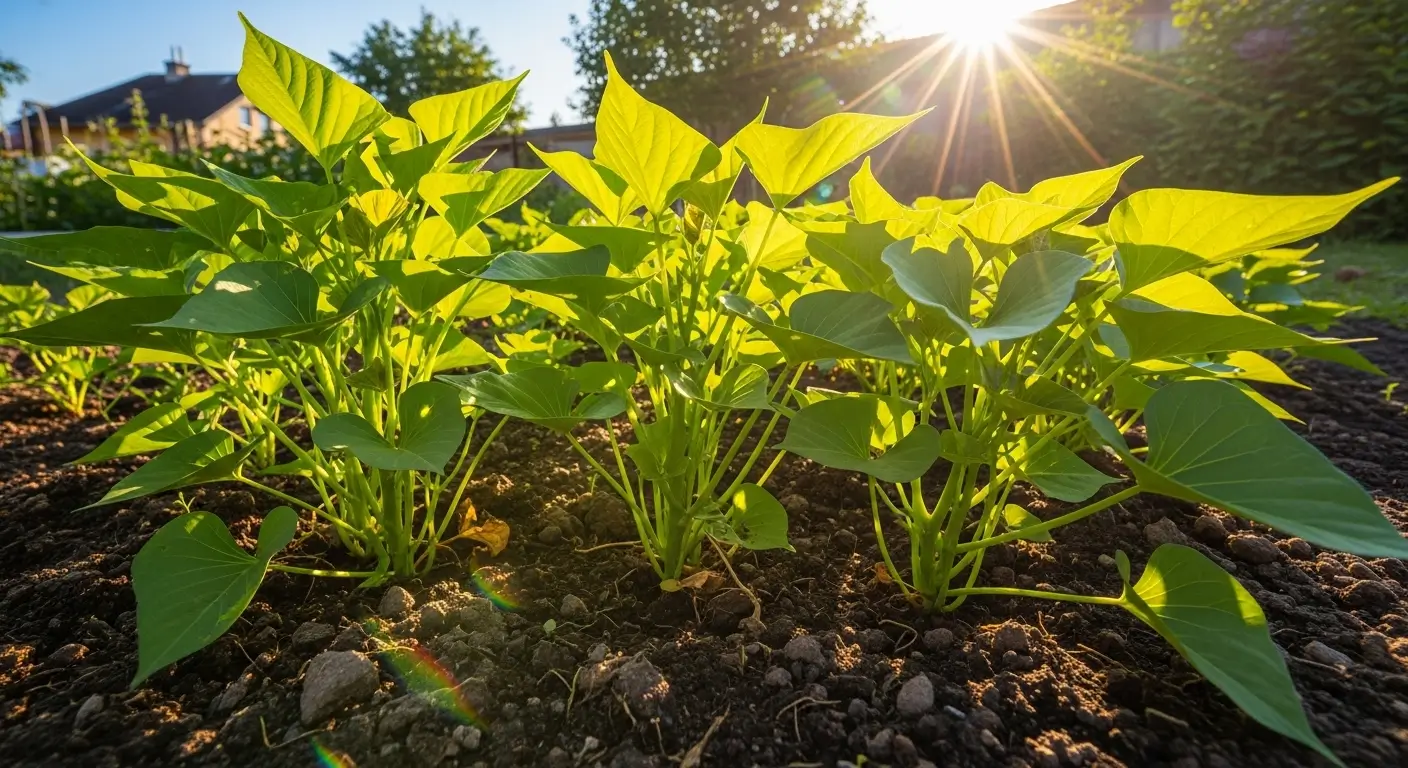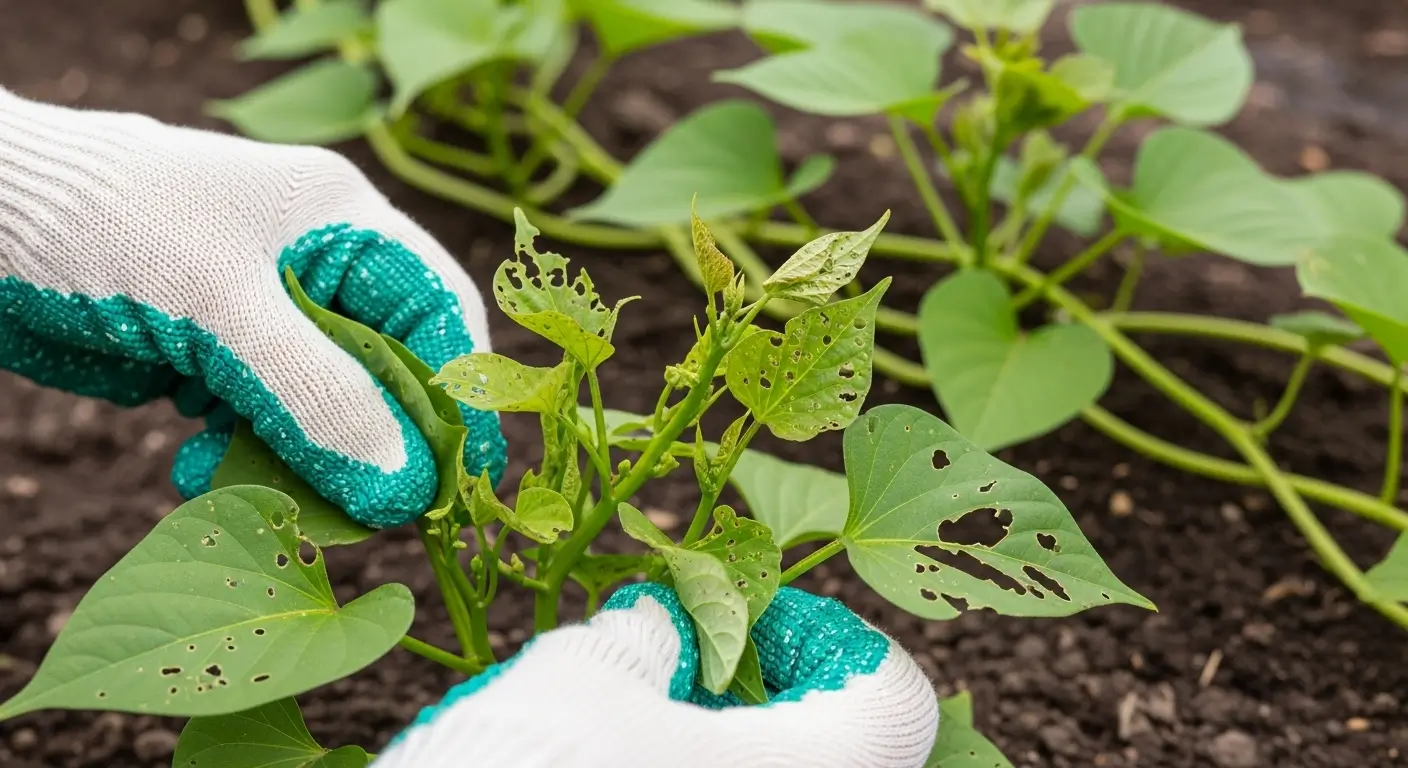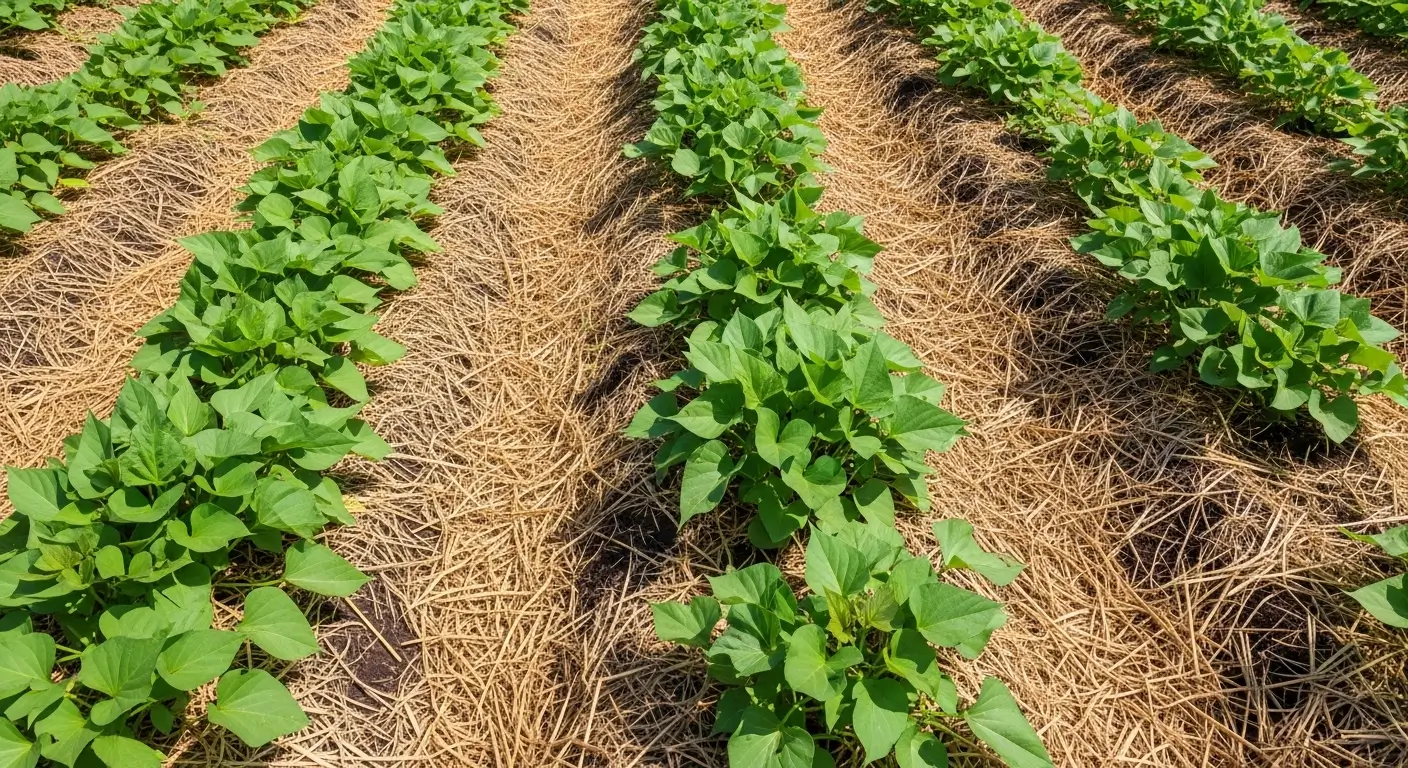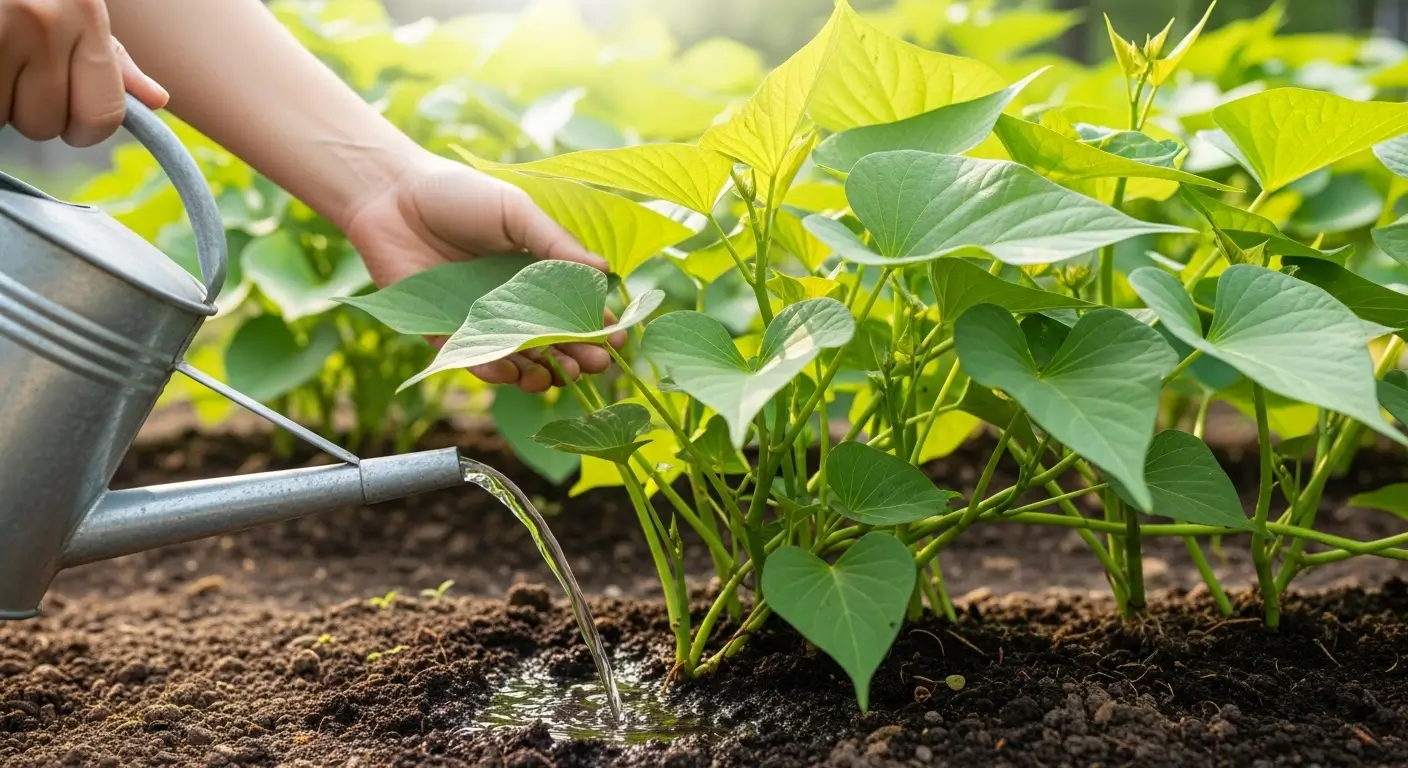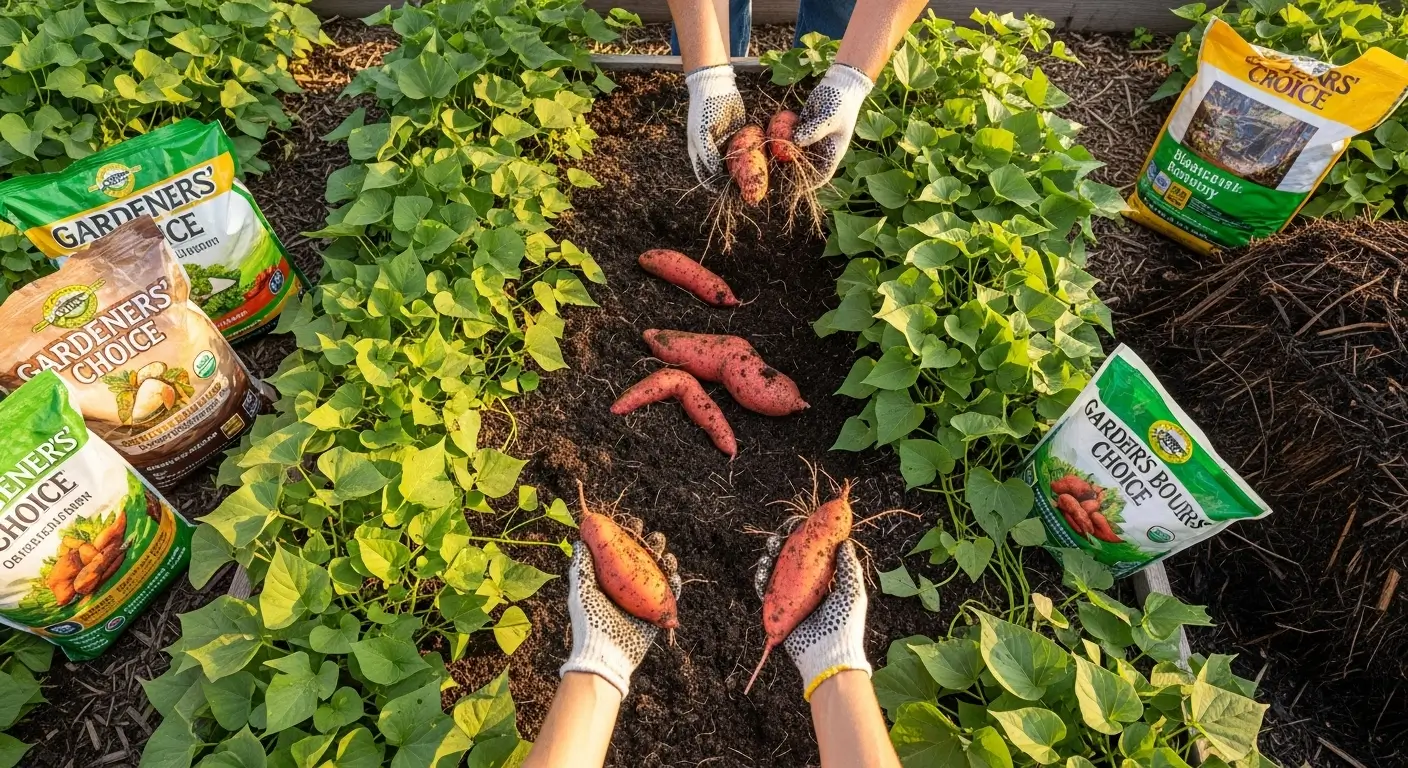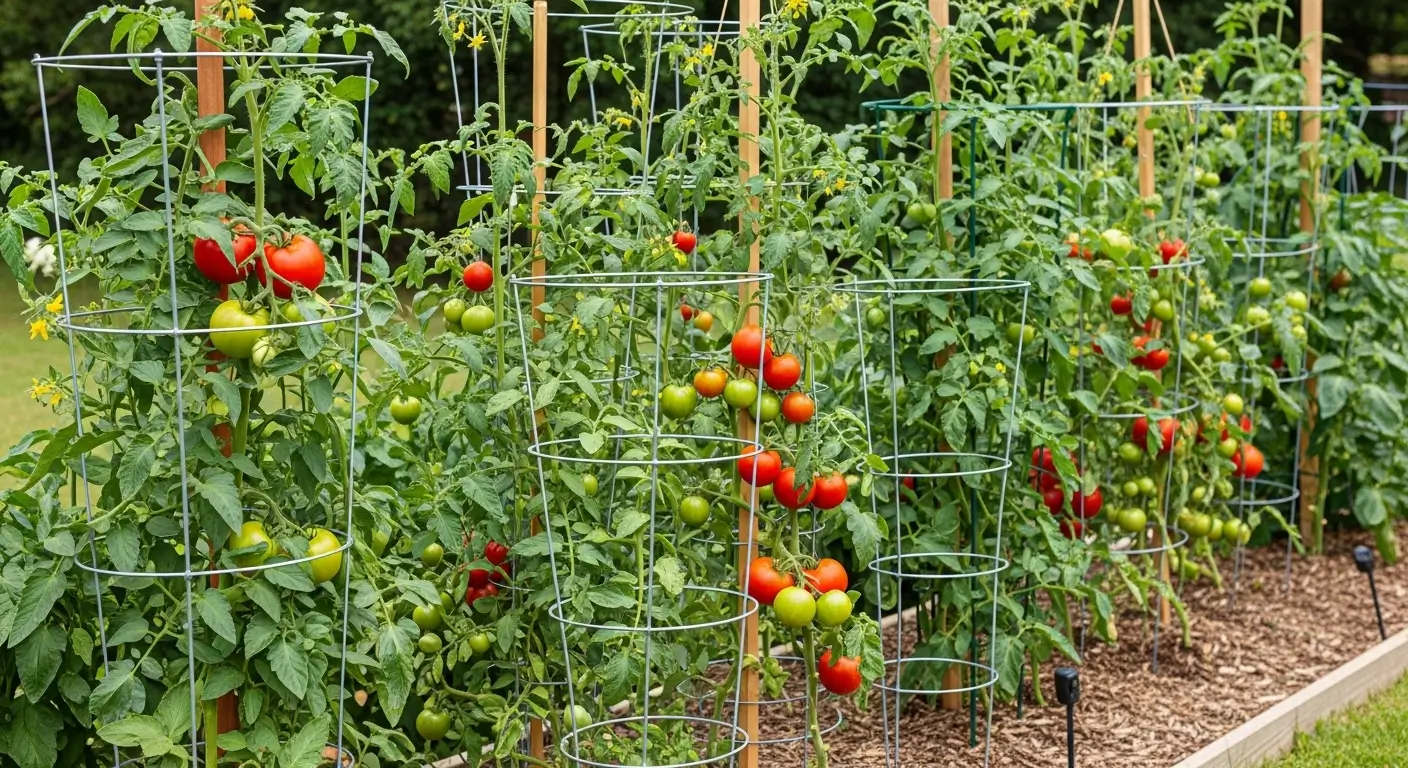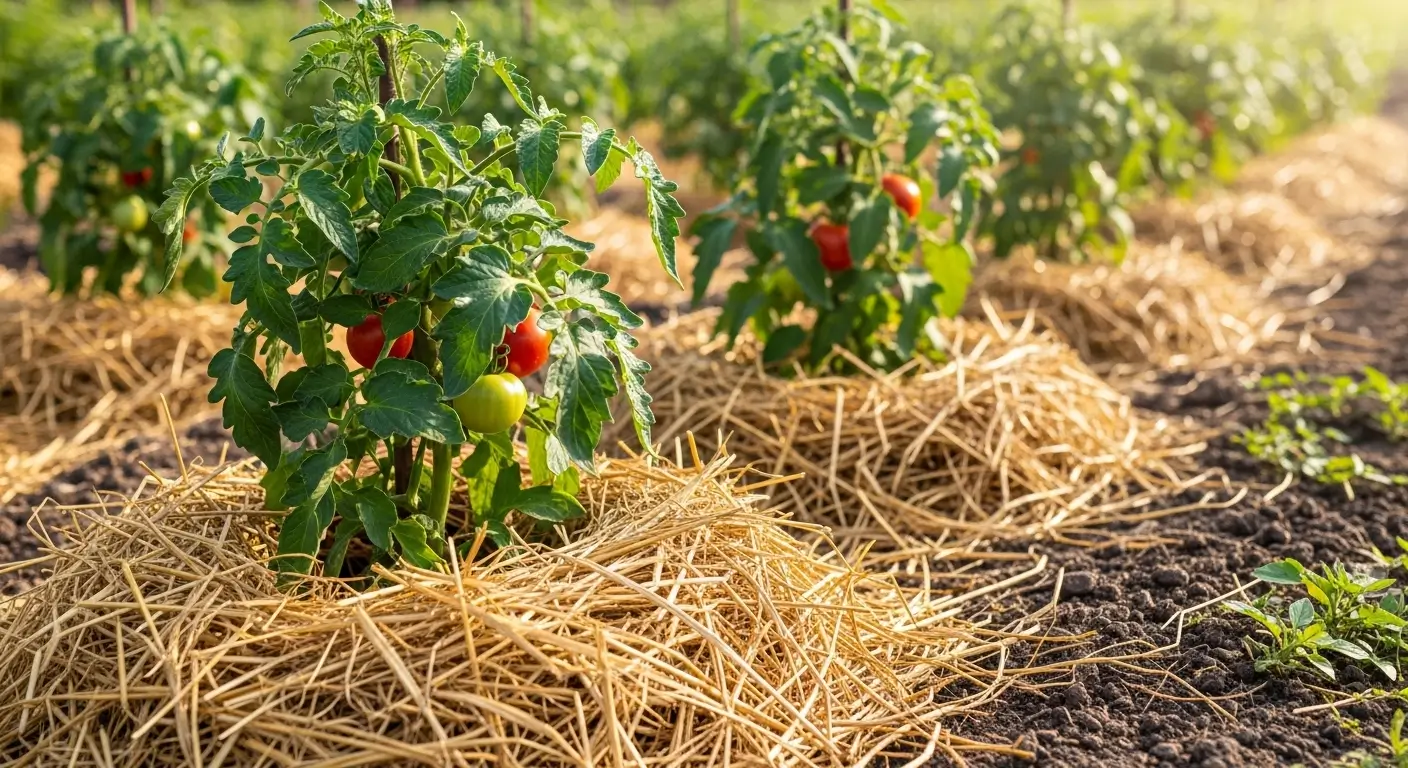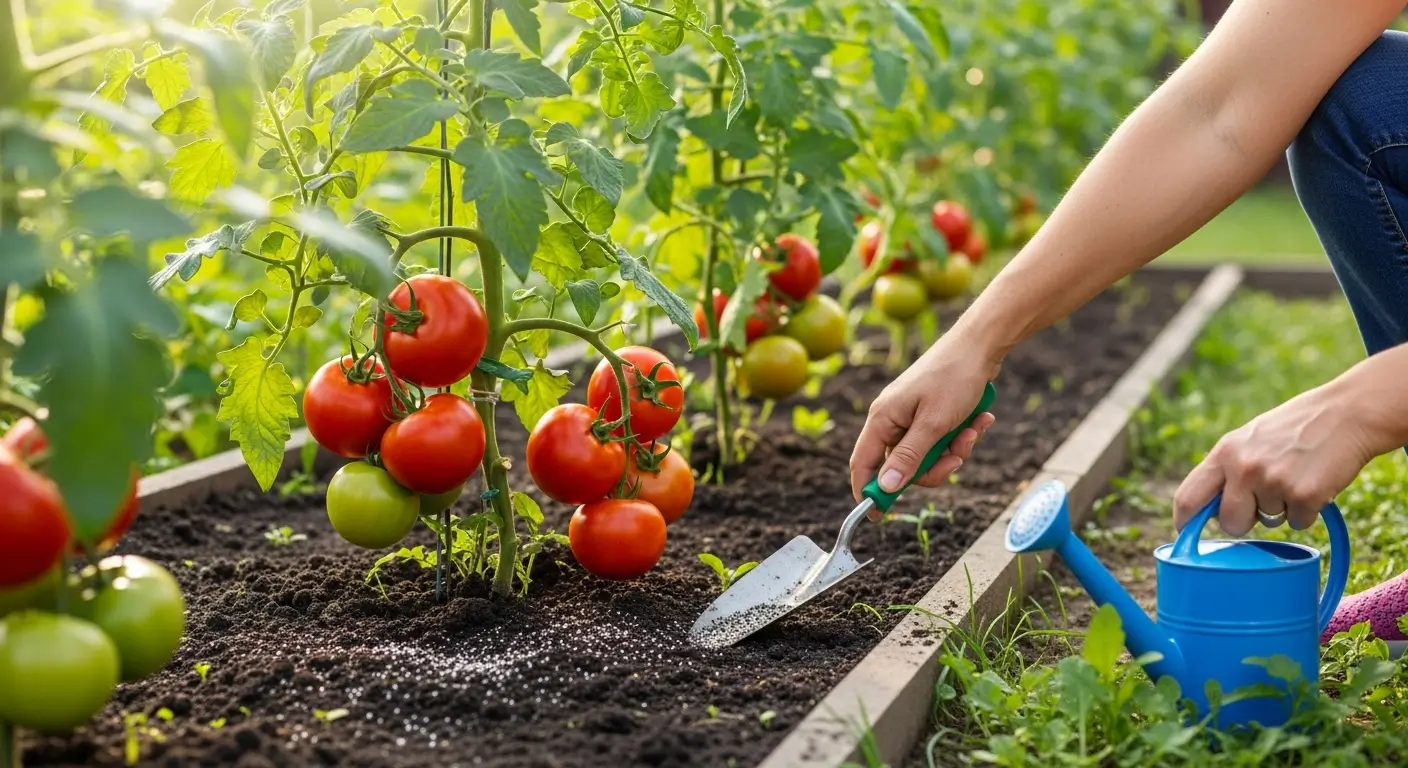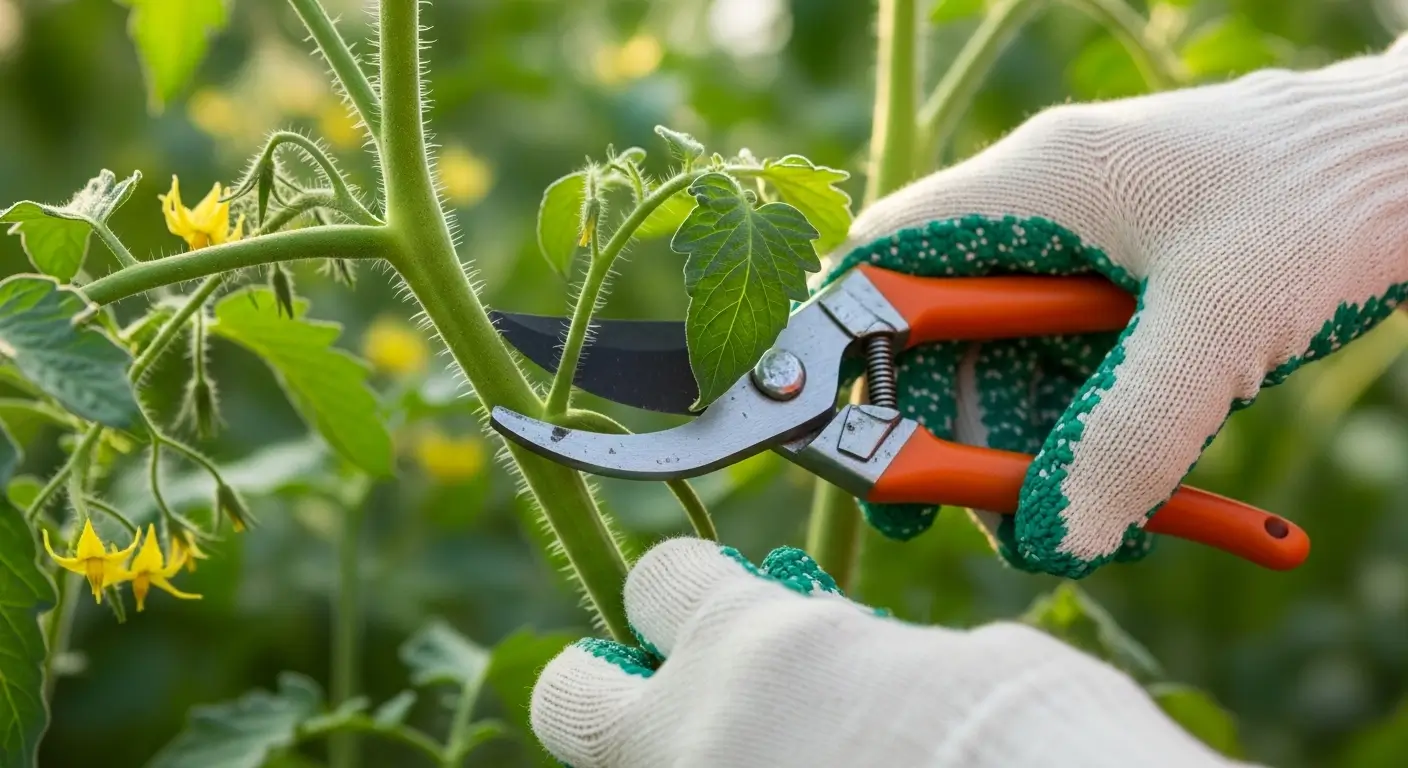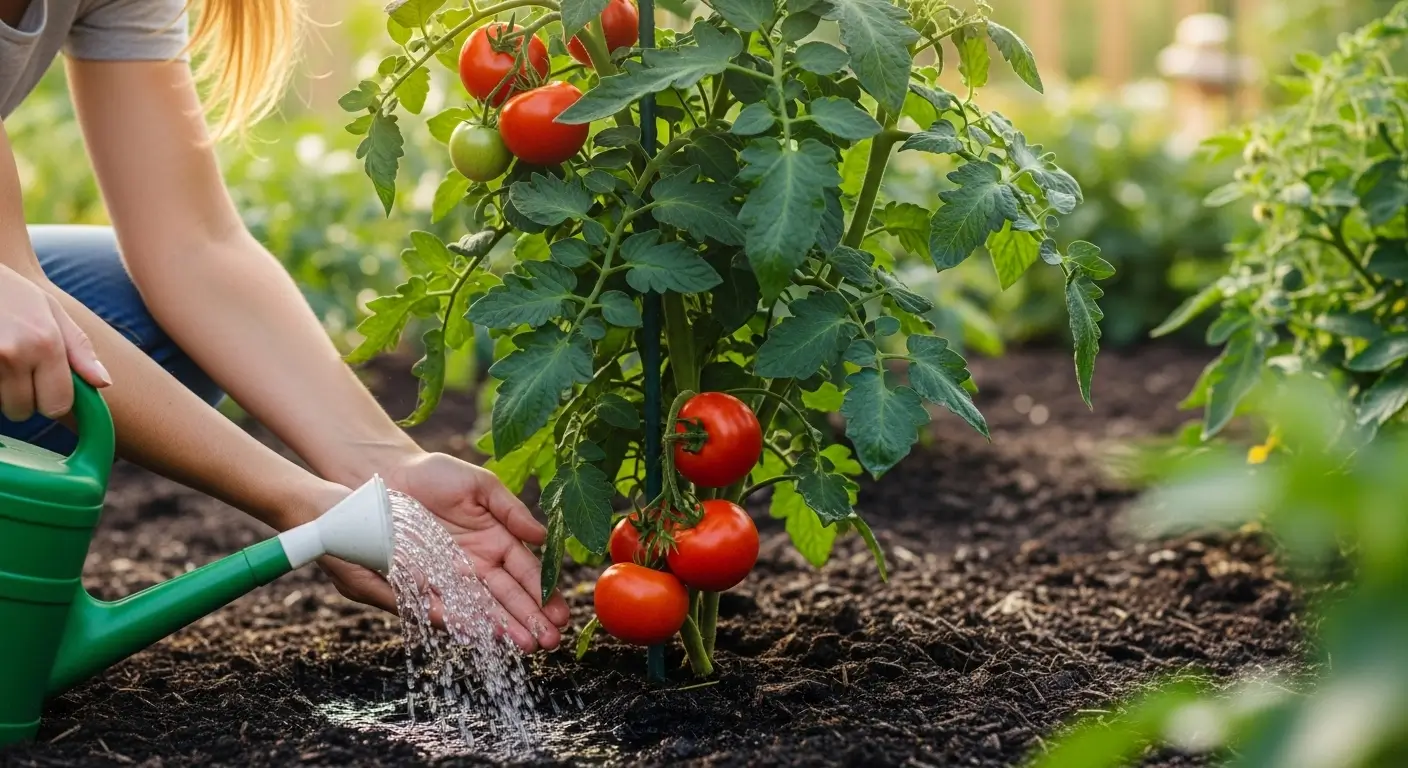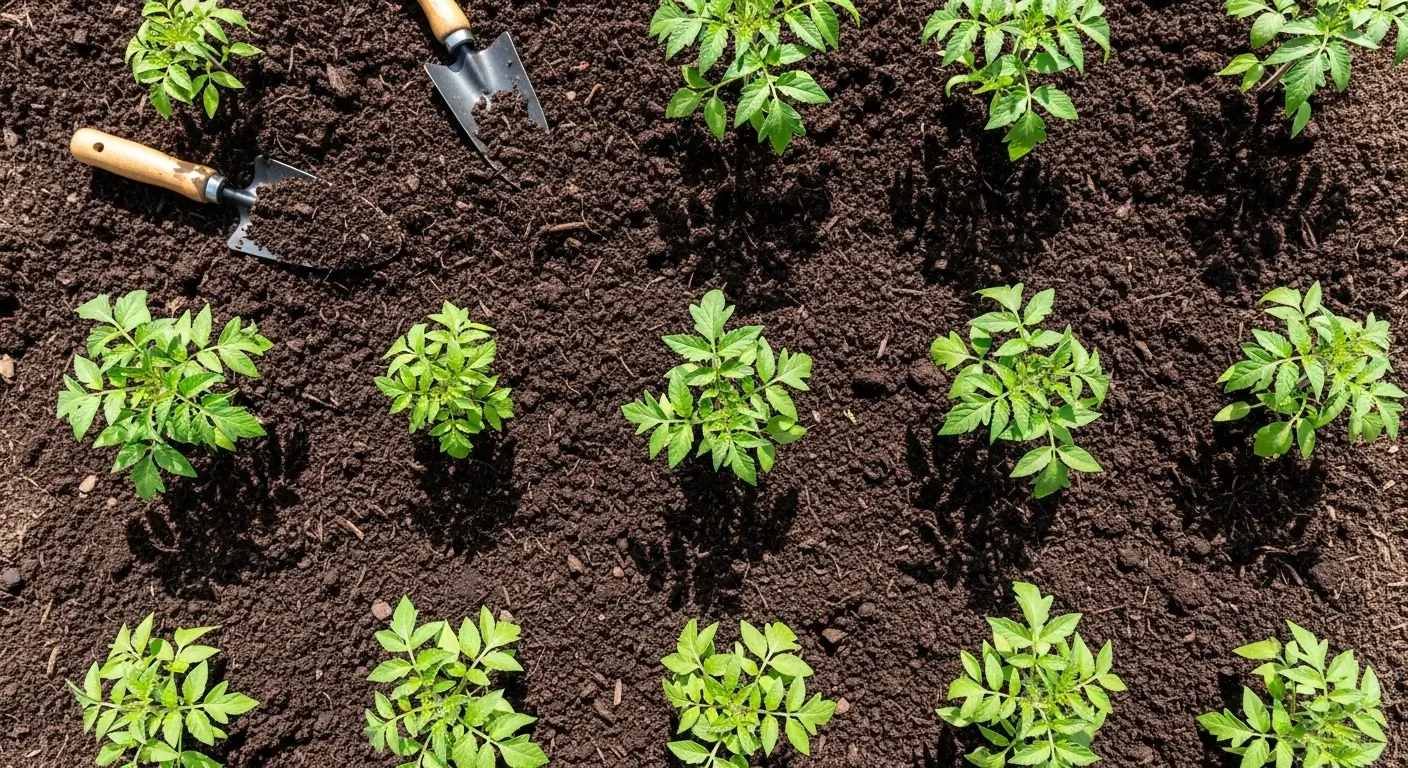Okay, so here’s the thing about sweet potatoes – I totally messed up my first attempt. Like, spectacularly.
Picture this: I’m all excited about growing my sweet potatoes, thinking I’m gonna be this excellent gardener. I planted those little slips in what I swore was the perfect sunny spot behind my garage. Fast forward to harvest time, and I’m digging up these pathetic, skinny things that looked like someone forgot to feed them for months. Seriously, my dog’s chew toys were more impressive.
Turns out my “sunny spot” was getting blocked by my neighbor’s massive maple tree for half the day. Who knew trees could be such drama queens about casting shade, right?
But here’s the deal – once I figured out what sweet potatoes actually want (spoiler alert: they’re basically sun addicts), everything changed. Now I’m pulling up these gorgeous, fat tubers that make me feel like a gardening rockstar. And honestly? You can totally do this, too.
Table of Contents
Why Sweet Potato Sunlight Requirements Matter More Than You Think
So sweet potatoes are basically tropical drama queens – they originally come from Central and South America, where it’s hot and sunny pretty much all the time. When I started growing them, I figured, “Hey, they grow underground anyway, how picky can they be about sun?”
Yeah… that was dumb.
Turns out these plants are like solar panels with attitude. The green leafy parts up top need tons of sunshine to make food for those chunky roots we’re all after. They’re constantly doing this energy conversion thing where sunlight becomes sweet potato magic. Less sun? Less magic. More sun? Hello, gorgeous sweet potatoes.
I learned this the hard way when I tried to squeeze them into a corner of my garden that only had morning sun. The plants looked okay, but come harvest time… oof. It was like they’d been on a diet all season. Nobody wants diet sweet potatoes, trust me.
The Sweet Spot: How Much Sun Do Sweet Potatoes Need?
Let’s cut to the chase – how much sun do sweet potatoes need to not hate you? They want 6 to 8 hours of direct sunlight every single day. Think of them as that friend who insists on lying out at the beach from dawn to dusk.
But here’s what I’ve figured out after years of trial and error in my Illinois garden: the best sunlight for sweet potatoes is when they get morning sun to dry off any dew (because nobody likes soggy leaves), plus that intense afternoon heat that makes you want to hide indoors with the AC cranked up.
My neighbor Mrs. Peterson – who’s basically the sweet potato whisperer around here – told me something that stuck: “Grace, these plants are like teenagers. Give them what they want, or they’ll pout and underperform.” She wasn’t wrong.
And honestly, can sweet potatoes get too much sun? Nah. These heat lovers laugh at what would turn other plants into crispy critters. The hottest, most brutal part of your yard? That’s perfect for them.
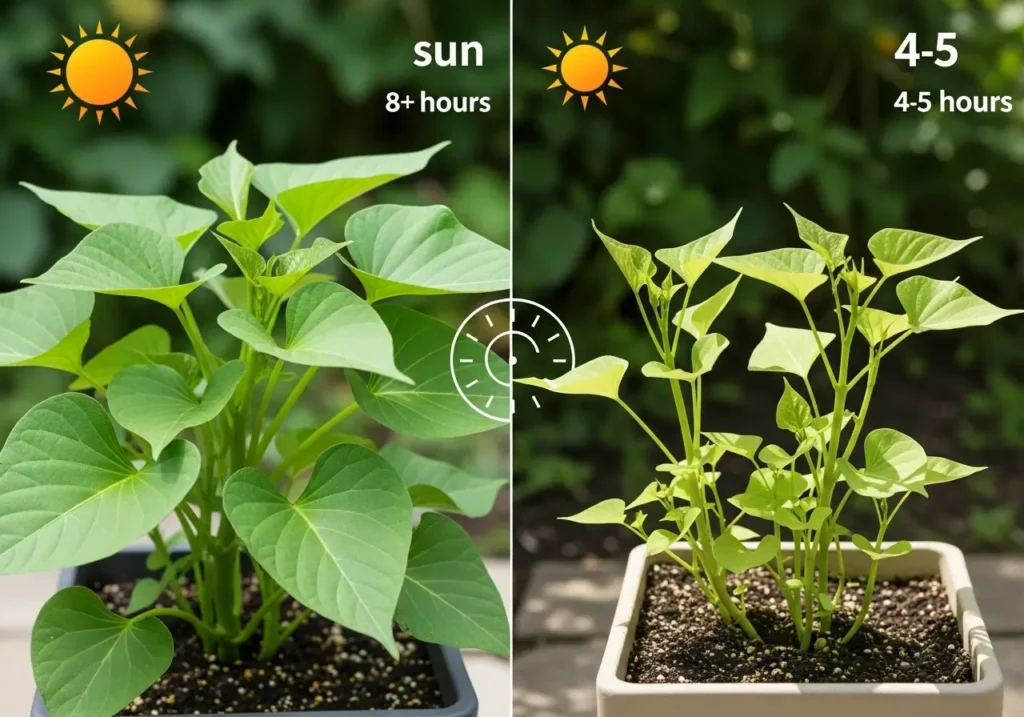
Okay, but here’s where it gets real – you might be thinking your spot gets “full sun” when it actually doesn’t. Trust me, I’ve been there. Before you commit to planting, let’s figure out if your chosen spot actually meets those sweet potato sunlight requirements. I put together this little tool to help you check:
See what I mean? It’s super easy to overestimate how much sun a spot actually gets. I used to think my back corner got “plenty of sun” until I actually tracked it hour by hour. Spoiler alert: it didn’t. This little reality check can save you from the disappointment I had with my first harvest.
Growing Sweet Potatoes in Partial Shade: What You Need to Know
Okay, real talk time. I get asked this constantly: “Grace, my yard’s kinda shady – can I still grow sweet potatoes?”
Well… growing sweet potatoes in partial shade is like trying to get a tan through a window. Technically possible, but you’re not gonna love the results.
If you’ve got 4 to 6 hours of sun, you might get some sweet potatoes, but they’ll probably be the disappointing cousins of what you could grow in full sun. I tried this once in a spot that got great morning light but was shaded by my fence after lunch. The vines looked all pretty and green, but the tubers? Let’s say they weren’t winning any beauty contests.
Partial shade doesn’t just give you smaller sweet potatoes – it gives you boring ones. Less sweet, more starchy, and they take forever to grow up. It’s like they’re stuck in gardening limbo.
But hey, if shade is all you’ve got, don’t throw in the towel. Try containers so you can chase the sun around your yard like some gardening nomad. Or pick varieties that are a bit more chill about their sun requirements.

Creating the Perfect Sunny Environment for Your Sweet Potatoes
Let me tell you how I turned into a sweet potato sun detective. I literally stalked my yard with my phone, taking pictures of potential spots every few hours on a sunny day. Felt ridiculous, but it totally worked.
You want a spot that gets hit with sun starting around 8 or 9 AM and continues until at least 4 PM. Avoid anywhere shadowed by your house, fence, or that giant tree your great-aunt planted back in 1987. I learned this lesson when I planted too close to my garage – morning sun was great, but by 2 PM, they were in shadow city. Epic fail.
Here’s a weird trick that actually works: I use reflective stuff around my sweet potato beds. Aluminum foil, white stones, even those shiny car sunshades. Sounds crazy, looks a little crazy, but it bounces extra light onto the plants. My husband thinks I’ve lost it, but my sweet potatoes love me for it.
If you’re doing containers (which I’m obsessed with for sweet potatoes), you’ve got a superpower – mobility! You can literally follow the sun around your yard. I have one friend who put all her sweet potato containers on those little wheeled plant caddies just for this reason. Genius, right?
Seasonal Considerations: Adjusting for Changing Light Patterns
Here’s something that caught me off guard when I started: the sun moves! I know, shocking discovery, but seriously – a spot that seems perfect in May might be partially shaded by July when all the trees leaf out.
I always do my scouting in mid-summer, the year before planting. It’s like advanced reconnaissance for your sweet potatoes. That way, I know exactly what I’m working with when the sun’s doing its peak summer thing in my Zone 5b climate (you can check your hardiness zone here to understand your specific growing season).
In the early season, sweet potatoes are forgiving about light because they’re just getting their roots sorted out. But once we hit late summer? That’s when they’re packing on the pounds underground and need every bit of sunshine they can get.
I’ve become that neighbor who trims branches that dare to shade my sweet potato beds. Sorry, not sorry, maple tree – my tubers need that afternoon sun more than you need that one branch.
Troubleshooting Common Sunlight Issues
Let me save you some headaches by sharing the most common “why are my sweet potatoes acting weird” problems I’ve seen:
Lots of vines, tiny potatoes: Your plants are getting enough light to look pretty but not enough to make food. It’s like they’re all dressed up with nowhere to go. Solution? Find them more intense midday sun.
Vines stretching like they’re doing yoga: They’re literally reaching for more light. When sweet potato vines start looking all leggy and desperate, they need more direct sun and less competition from taller plants.
Slow, pale, sad-looking plants: This screams “I need more sun!” to me. Healthy sweet potato plants should be vibrant green and growing like crazy all summer long. Pale plants are basically waving a white flag.
Pro tip: If your sweet potatoes aren’t doing their thing, spend a day actually tracking their sun exposure hour by hour. You might be shocked at how little direct light they’re actually getting.
Maximizing Your Sweet Potato Harvest Through Smart Light Management
After growing these things for years, I’ve got my light game down to a science. Well, sort of a science mixed with a lot of “let’s try this and see what happens.”
First, I always plant in raised beds or mound the soil. Not only does this help with drainage (sweet potatoes hate wet feet), but it gets them closer to the sun. Even raising them 6 inches makes a difference.

I’m also super picky about what I plant near my sweet potatoes. They don’t play well with tall plants that hog the light. Low-growing stuff like basil? Perfect. Corn or tomatoes? Nope, keep those drama queens away from my sweet potato real estate. Suppose you want to dive deeper into this whole companion planting thing. Check out our sweet potato companion plants guide. In that case, it’s got all the details on who plays nicely together.
Timing matters too. I plant my slips in early June when the sun’s at its peak performance for the year. Why handicap them with a weaker spring sun when they could have the whole summer experience?
One thing I do that looks weird to my neighbors is train the vines. Instead of letting them sprawl wherever they want, I guide them so they don’t shade each other. Sweet potato vines can get pretty jungle-like, and you don’t like the inner leaves getting bullied by the outer ones.
For the whole sweet potato growing experience – soil prep, planting, the works – definitely check out our complete sweet potato growing guide. It’s like the ultimate sweet potato handbook.
Choosing the Right Sweet Potato Varieties for Your Light Conditions
Here’s something cool I’ve learned: not all sweet potato varieties are equally picky about their sun situation. Some are total sun divas, while others are more laid back about lighting conditions.
The orange ones like Beauregard and Centennial? They’re the high-maintenance varieties that demand full sun but reward you with excellent flavor when you give them what they want. Purple and white varieties tend to be a little more chill about partial shade, though they still prefer complete sun treatment.
If you’re new to this whole sweet potato thing, I always tell people to start with Beauregard. It’s reliable, you can find slips pretty much anywhere, and it’ll teach you what happy sweet potatoes look like. Once you’ve mastered growing Beauregard in full sun, you can get fancy with weird varieties or challenging growing spots.
Want to explore all the different types? Our types of sweet potatoes guide breaks down all the varieties and their quirks, including who’s pickiest about light.
Key Takeaways for Sweet Potato Success
Okay, let me hit you with the most essential stuff you need to remember:
- Sweet potatoes need 6 to 8 hours of direct sun minimum – they’re basically sun worshippers
- Morning through late afternoon sun is the sweet spot
- You can try partial shade (4-6 hours), but expect smaller, less impressive results
- Scout your planting spots during peak summer to see what you’re really working with
- Containers are fantastic because you can move them around to chase the sun
- Good lighting is just as crucial as good soil and proper watering
Your Sweet Potato Journey Starts Now
Growing sweet potatoes has been one of my favorite gardening adventures. There’s something so satisfying about digging up these beautiful, colorful treasures after months of watching those vines spread all over the place. But it really does start with getting the sun situation right.
Remember that pathetic first harvest I told you about? The following year, I moved everything to the sunniest spot in my yard, and wow – the difference was like night and day. I harvested three times as many tubers, and they were sweet and gorgeous. They had that perfect texture that makes you never want to repurchase store-bought sweet potatoes.
Don’t let crappy lighting ruin your sweet potato dreams. Take the time to find that perfect sunny real estate in your yard, and I guarantee you’ll be blown away by what these plants can do when they’re happy.
So, have you tried growing sweet potatoes yet? I’d love to hear your stories – the good, the bad, and the ugly. Please drop me a comment and let’s chat about what worked (or totally didn’t work) in your garden. And if you’re still figuring out where to put these sun-loving beauties, ask away! We’re all figuring this gardening thing out together, and I’m always up for sharing what I’ve learned through my many mistakes.
Sweet Potato Sunlight Requirements FAQ
How much sun do sweet potatoes need to grow properly?
Sweet potatoes need a minimum of 6 to 8 hours of direct sunlight daily for optimal growth and tuber development. They’re tropical plants that thrive in full sun conditions, with morning through late afternoon exposure being ideal for maximum harvest quality and size.
Can you grow sweet potatoes in partial shade?
While sweet potatoes can survive in partial shade with 4-6 hours of sunlight, they will produce smaller, less sweet tubers compared to those grown in full sun. Partial shade growing is possible but results in reduced harvest quality and longer growing times.
What happens if sweet potatoes don’t get enough sunlight?
Sweet potatoes that don’t receive adequate sunlight will have poor tuber development, resulting in small, stringy, and less flavorful roots. The plants may also show leggy growth, pale leaves, and slower overall development as they struggle to produce enough energy through photosynthesis.
What is the best sunlight exposure for sweet potatoes throughout the day?
The best sunlight for sweet potatoes includes morning sun starting around 8-9 AM to dry dew from leaves, combined with intense afternoon sun until 4-5 PM. This combination provides the energy needed for optimal tuber development while reducing disease risk from moisture.
